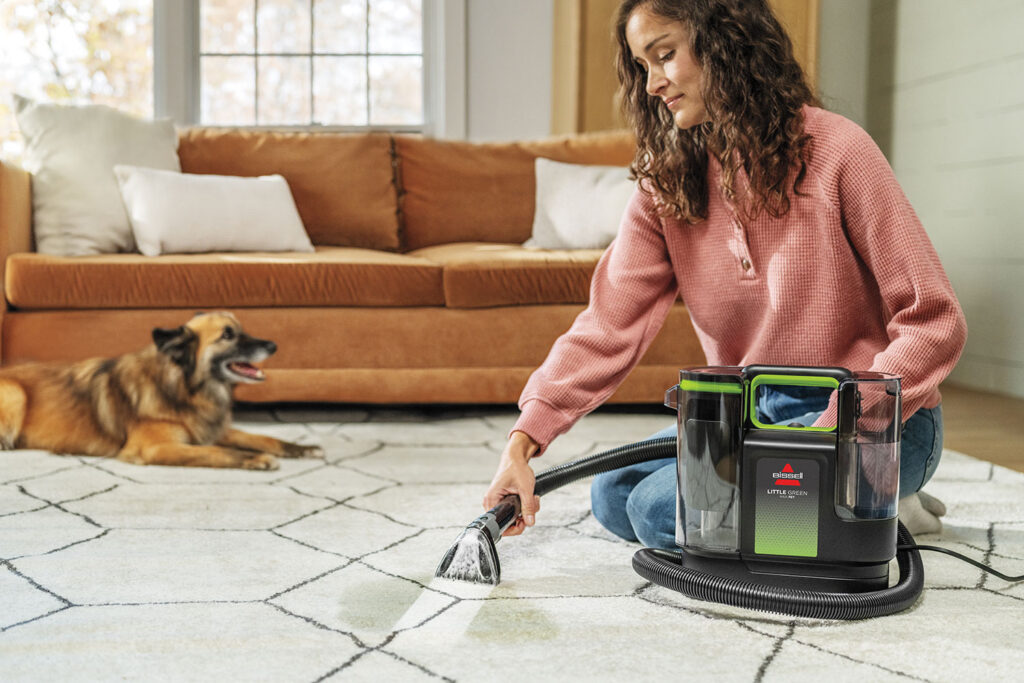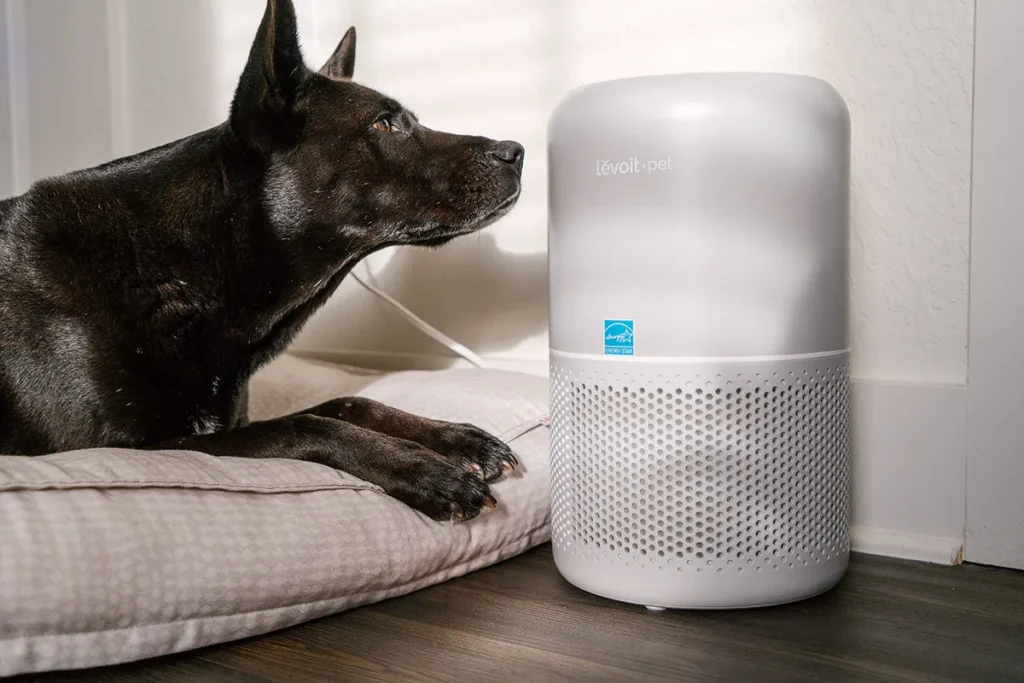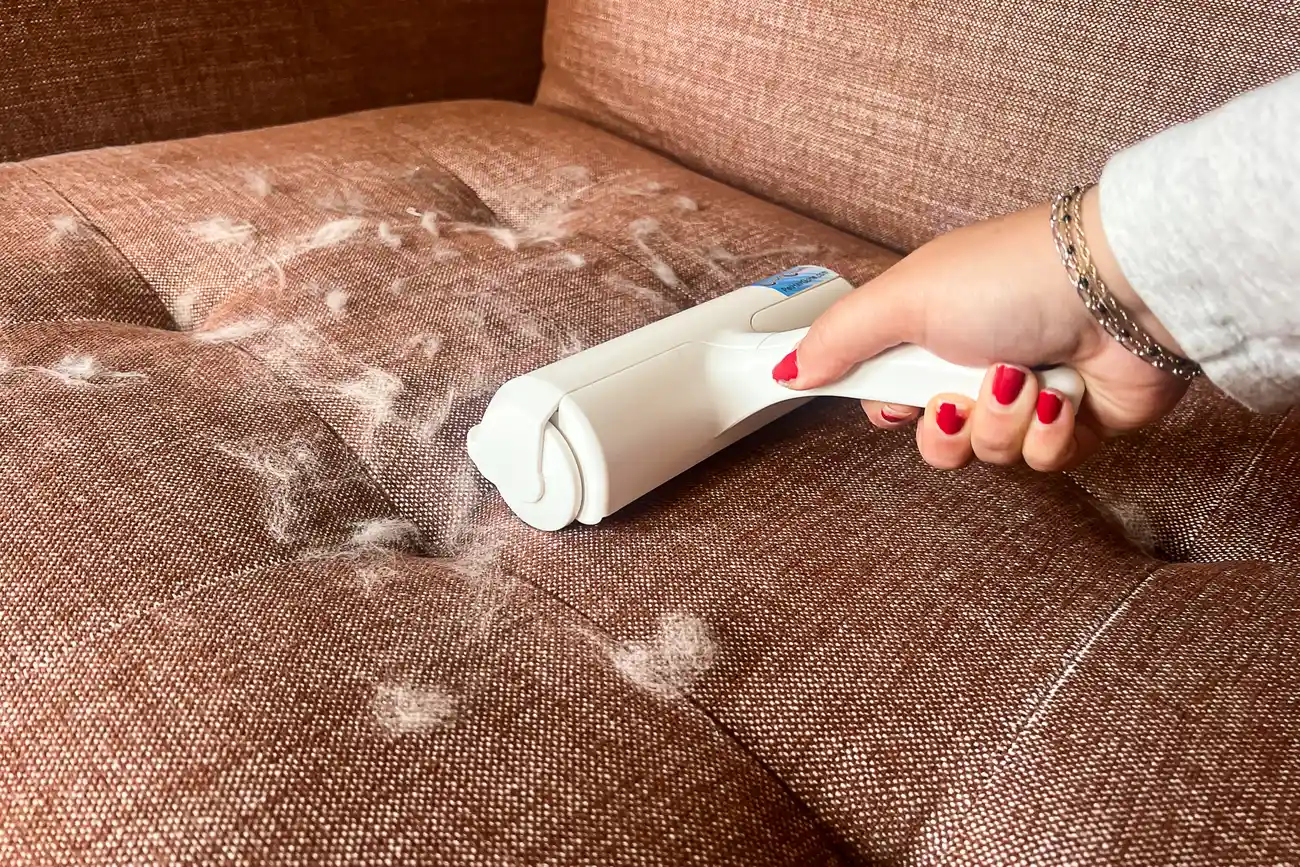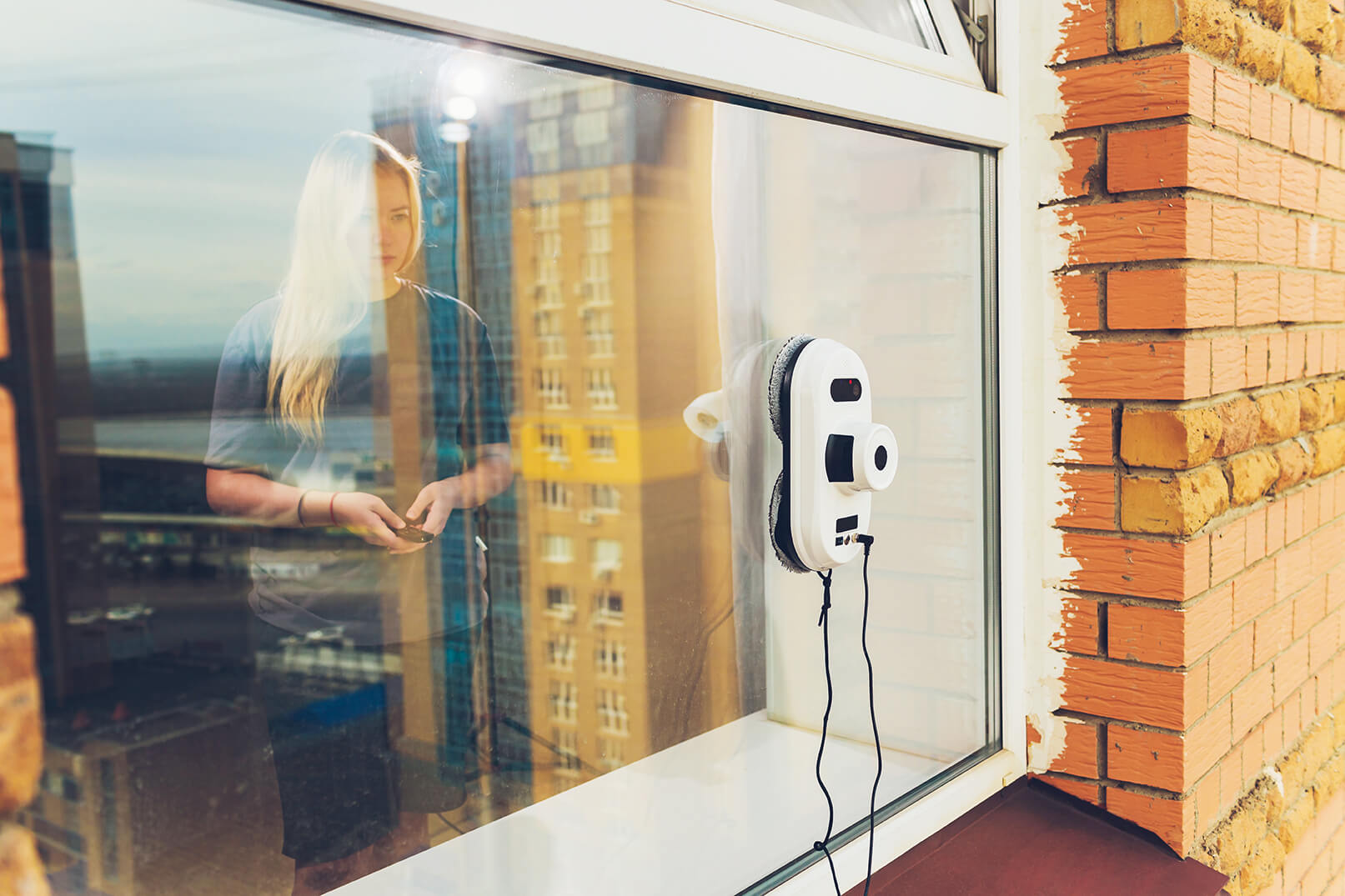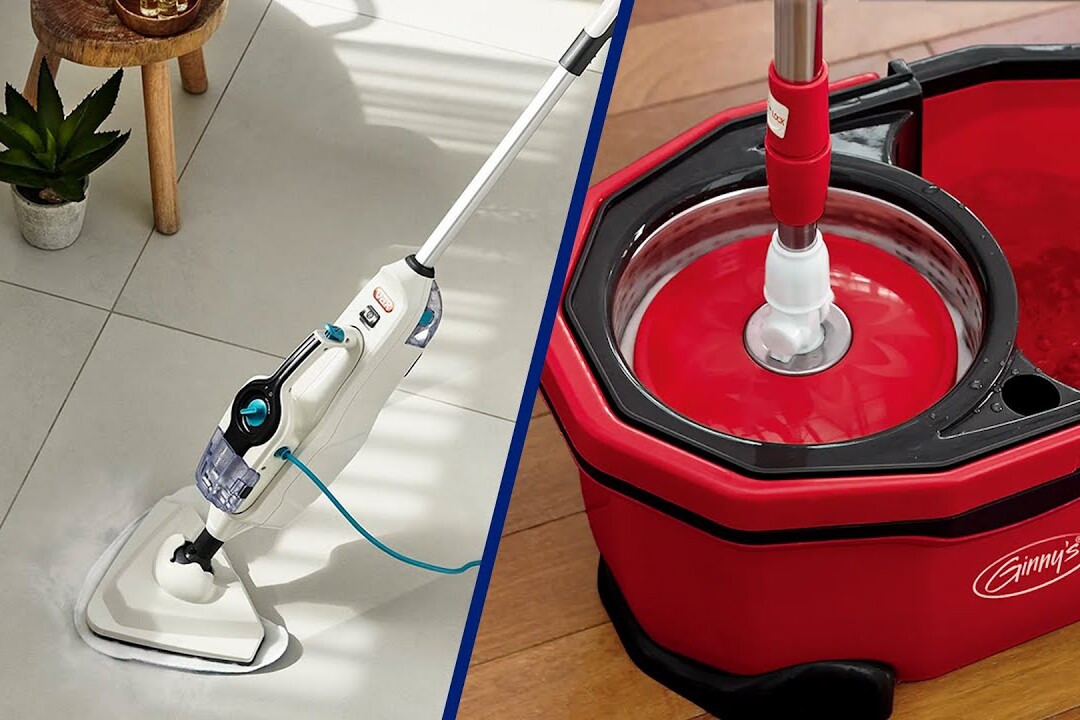Being pounced on by a big woof when you open the door to your home is the welcome that we all need. Some feel a similar sense of joy when their moody feline gently scrapes its behind as a sign of comfort. That is why sharing your home with a pet is one of life’s greatest joys. They bring companionship, energy, and warmth into our daily routines. But for people living in apartments, studios, or smaller houses, there’s a west side to the story: odors. In a confined space, even the smallest smell can quickly dominate the entire room. A damp dog after a rainy walk, a litter box that’s overdue for cleaning, or a favorite pet bed that’s absorbed weeks of use—all of these can become noticeable in ways that make you self-conscious, especially when guests visit. And the ones who crinkle their noses are the dangerous ones!
The challenge isn’t simply about masking smells. Anyone who has tried spraying a quick burst of air freshener knows it doesn’t take long before the odor creeps back. Pet odors in small spaces linger because they often seep into fabrics, carpets, and even the air itself. Unlike larger homes, where odors can disperse more easily, smaller areas trap these smells, magnifying their intensity. This makes freshening up a small space both more urgent and more challenging.
Do you need to wager one for the other? Absolutely not! What is this? The Dark Ages? You don’t have to choose between loving your pets and living in a fresh-smelling home. With the right strategies, you can prevent odors from building up in the first place, tackle them effectively when they do occur, and keep your living space welcoming to both you and your visitors. From smart cleaning routines and odor-neutralizing products to small lifestyle tweaks, it’s absolutely possible to maintain a healthy, pleasant environment no matter how small your square footage may be.
What’s important to remember is that eliminating pet odors isn’t about one quick fix—it’s about combining habits, tools, and awareness. No magic smell-dispelling spells can do that for you, unfortunately. Sad ol’ muggles we are. Staying on top of litter box maintenance, washing your pet’s bedding regularly, and grooming your pet all work together to reduce odors before they spread. Meanwhile, investing in products like HEPA air purifiers, enzymatic cleaners, or odor-trapping mats can take your efforts a step further, creating lasting freshness.
This guide will walk you through the most common sources of pet odors in small spaces, practical solutions to remove them, and the best preventive habits and tools to keep your home smelling clean. Whether you’re a cat owner in a studio apartment, a dog parent in a one-bedroom flat, or someone juggling multiple pets in a small house, these strategies will help you breathe easier and feel more confident about your living space.
Common Causes of Pet Odors in Small Spaces
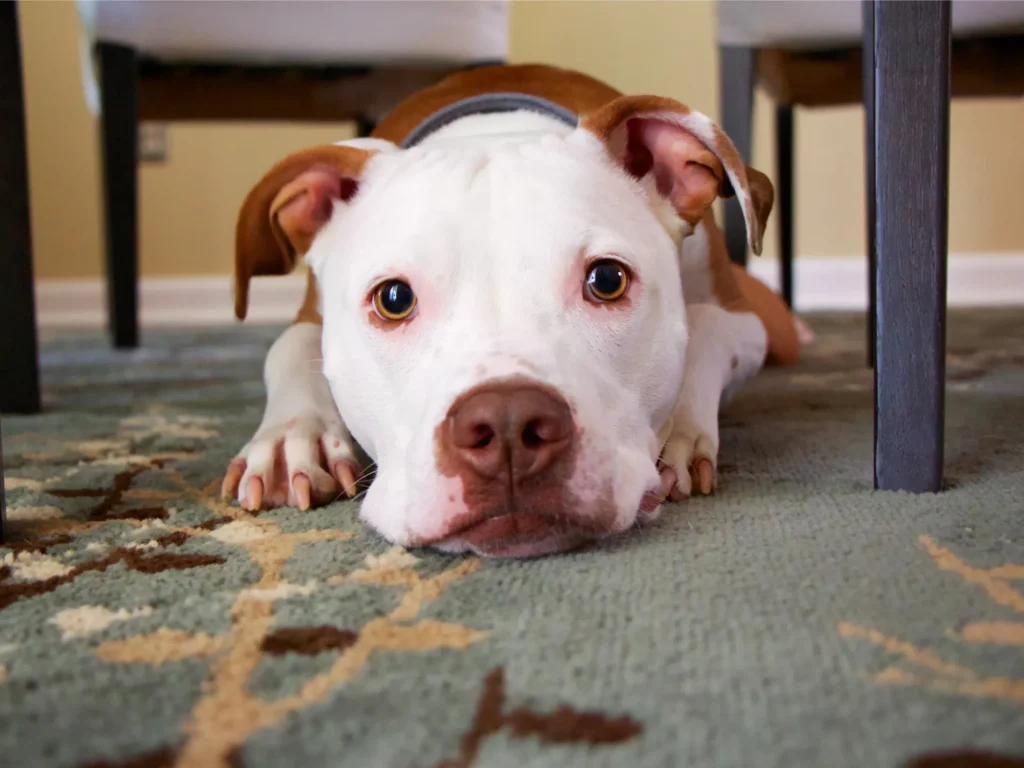
Before you can solve the problem, it’s important to understand it. The question that you need to ask yourselves is this: why do odors stick around and feel stronger in smaller homes? In tight spaces, air circulation is limited, which means smells don’t disperse as easily. Combine that with fabrics, carpets, and upholstery that trap odors, and suddenly, even minor issues become noticeable. Is that scientific enough for you? Here are the main culprits:
-
Litter Boxes (Cats)
Even with daily scooping, litter boxes can release strong ammonia odors that quickly fill an apartment. Covered boxes may trap the smell inside, but as soon as your cat uses it, the scent escapes into the room.
-
Pet Accidents on Carpets and Upholstery
Urine, vomit, or accidents that aren’t cleaned thoroughly can seep into fabrics and padding, leaving behind lingering smells that resurface even after you think the spot is clean.
-
Wet Dog Smell and Fur
Dogs have natural oils in their skin and fur, which can produce a distinct smell when damp. In a small apartment, that “wet dog” odor can feel overwhelming until properly aired out.
-
Pet Bedding, Toys, and Accessories
Over time, your pet’s bed, favorite blanket, or soft toys absorb body oils, drool, and dirt. If they’re not washed regularly, they become a constant source of odor.
-
Poor Ventilation
Small spaces often lack proper airflow. Without open windows or air circulation, odors get trapped and recycle through the same air, making them more noticeable.
-
Pet Food and Treat Storage
Leaving kibble bags open or keeping treats in non-sealed containers can also create a musty or meaty odor that lingers in the room.
Step-by-Step Solutions to Eliminate Pet Odors in Small Spaces
-
Create a Consistent Cleaning Routine
Small spaces demand more frequent upkeep. Vacuum carpets, rugs, and upholstered furniture at least twice a week to pick up pet hair and dander, which trap odors. Wash hard floors with pet-safe cleaners that neutralize smells rather than just masking them. Regular cleaning prevents odors from becoming embedded.
-
Wash Bedding, Blankets, and Toys Weekly
Anything your pet sleeps on or plays with will eventually hold odors. Toss bedding, cushion covers, and washable toys into the laundry every week using a mild, fragrance-free detergent. For items that can’t go into the washer, a quick spritz with an enzyme-based fabric refresher can make a big difference.
-
Use Air Purifiers and Natural Fresheners
Invest in an air purifier with a HEPA filter and an activated carbon layer. The HEPA filter captures dander and fur, while the carbon filter absorbs odor molecules. If you want a natural solution, place bowls of baking soda or activated charcoal in corners of your home—they act as odor sponges.
-
Tackle Accidents Immediately with Enzymatic Cleaners
When your pet has an accident, speed matters. Blot the area and apply an enzymatic cleaner designed for pet odors. These cleaners break down the proteins in urine and waste that cause lingering smells. Avoid ammonia-based products, as they can actually encourage pets to mark the same spot again.
-
Freshen Soft Furnishings
Curtains, throw pillows, and couches absorb pet odors over time. Steam cleaning a few times a year helps release trapped smells. For a quick fix, sprinkle baking soda on fabric surfaces, leave it for 15 minutes, then vacuum it away.
-
Keep Pets Groomed and Clean
A clean pet equals a fresher home. Brush your dog or cat regularly to reduce shedding and dander. Bathe them as recommended for their breed—too often can dry out their skin, but too infrequently allows oils and dirt to build up. Don’t forget dental hygiene; bad breath contributes to odors in close quarters.
-
Improve Ventilation
Open windows when possible, even for short periods. If your space has poor airflow, consider using small fans to move air around and reduce the intensity of smells.
-
Store Food Properly
Keep pet food in sealed, airtight containers. Not only does this preserve freshness, but it also stops musty or meaty odors from escaping into your living area.
Preventing Pet Odors Before They Start
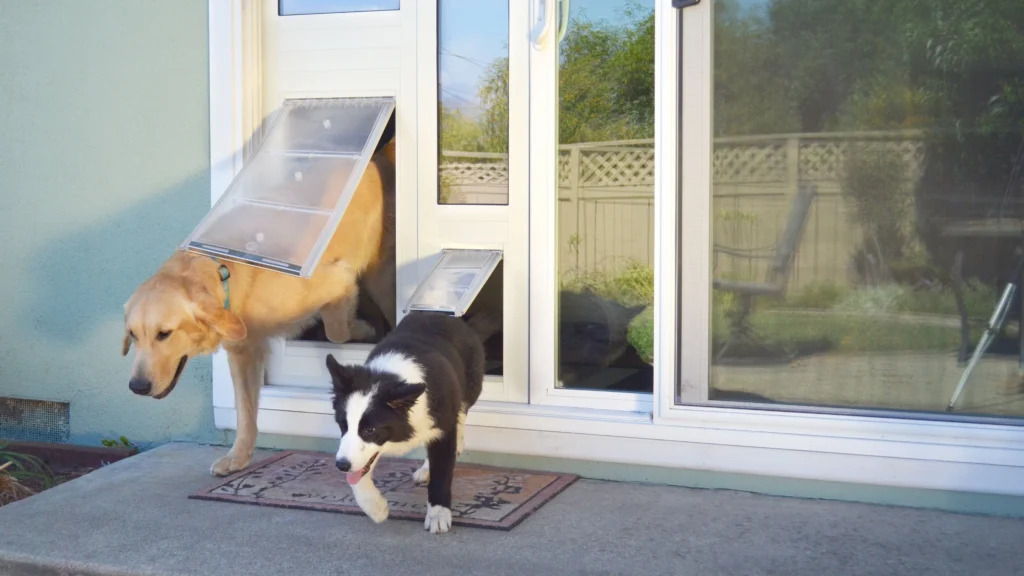
Eliminating odors after they appear is one thing, but the best approach is to stop them from taking hold in the first place. Prevention keeps your small space consistently fresh, saves you time on deep cleanups, and creates a healthier environment for both you and your furry buddy. Here are key habits every pet owner should adopt:
-
Stay Ahead of Litter Box Maintenance
Scoop at least once a day, and deep clean the box weekly with soap and warm water. It sounds dirty, but not more than a tray that’s been left unclean. Replace litter fully instead of just topping it up. If possible, place the box in a well-ventilated corner to stop odors from spreading through your home.
-
Clean Accidents Right Away
If your pet has an accident, don’t wait and don’t panic. Immediate blotting and treatment with an enzymatic cleaner stops stains and odors from sinking deep into carpets or upholstery. The quicker you act, the less chance the smell has to linger.
-
Rotate and Wash Bedding Regularly
Having two or three sets of washable bedding and blankets makes rotation easier. Swap them weekly so one set is always clean and fresh. This simple routine drastically cuts down on “doggy” or “cat” smells.
-
Wash Food and Water Bowls Daily
Leftover food and water can leave behind unpleasant odors, especially in warm apartments. A quick daily wash keeps bowls fresh and prevents bacteria buildup.
-
Grooming as Routine, Not Rescue
Brush pets every couple of days to keep loose hair and dander under control. If your pet has a strong natural odor, consider professional grooming every few weeks. Dental chews and brushing teeth reduce bad breath—something you’ll notice immediately in a smaller living space.
-
Use Odor-Proof Storage
Seal pet food in airtight containers and keep treats in closed jars or tins. This keeps food fresher while preventing the smell of kibble or dried meat from spreading into your living area.
-
Control Humidity
Damp air makes odors worse. If your small space tends to get humid, use a compact dehumidifier to keep the air dry. Pets smell stronger in moisture-heavy environments, and reducing humidity goes a long way in keeping things fresh.
By weaving these preventive habits into your daily and weekly routines, you’ll find that odor never has the chance to build up. Prevention makes every other step—cleaning, refreshing, even product use—more effective and less overwhelming.
Best Products for Pet Odor Control in Small Spaces
1. Air Purifiers with HEPA + Carbon Filters
When it comes to pet odors in small apartments or studios, an air purifier is often the most effective but ignored long-term solution. The combination of a HEPA filter and an activated carbon filter is key: HEPA captures fine particles like dander and hair, while carbon absorbs odor molecules that float in the air.
One of the top choices pet owners often rave about is the Levoit Core 400S or similar mid-range models. Users on Amazon and Reddit frequently mention that within just a few hours of running it, the “dog smell” or “cat litter smell” noticeably reduces, even in small living rooms. Many reviewers highlight how quiet the unit is, which is a big plus for apartments where you don’t want a constant humming sound.
For households with cats, users often note that the purifier makes a real difference in controlling litter box odors. One reviewer said, “I keep the litter box in my bathroom, and with this purifier running, guests no longer notice a smell.” For dog owners, people frequently comment on the purifier’s ability to handle the dreaded “wet dog” smell after walks in the rain.
On the practical side, air purifiers don’t come easy and require regular filter replacements, usually every 6–8 months depending on usage. Some customers mention the cost of replacement filters as a downside, but most agree it’s worth it for the noticeable freshness.
Another benefit often pointed out in reviews is the improvement in air quality for allergy sufferers. Many pet parents with allergies find that not only does the purifier reduce odors, but it also cuts down sneezing, itchy eyes, and congestion caused by pet dander. Two birds, one stone.
Pros:
- Effective odor control in small spaces.
- Captures dander and fur particles.
- Quiet operation.
- Also helps with allergy symptoms.
Cons:
- Requires regular filter changes.
- It can be pricier than sprays or cleaners.
For pet owners in small homes, a HEPA + carbon air purifier isn’t just a nice-to-have—it’s often the centerpiece of an odor-control strategy.
2. Enzymatic Cleaners
No matter how careful you are, accidents happen, especially with those young and cute little fur balls with tiny feet, senior ones, or those adjusting to a new environment. The problem with standard household cleaners is that they often mask odors rather than eliminate them. Worse, some leave behind traces of ammonia, which can actually encourage pets to mark the same spot again. That’s where enzymatic cleaners enter the ring with their gloves off.
Enzymatic cleaners work by breaking down the proteins in urine, vomit, and feces that cause stubborn odors and stains. A well-reviewed option many pet owners swear by is Rocco & Roxie Professional Strength Stain & Odor Eliminator. On Amazon, it consistently receives high praise for truly neutralizing smells rather than just covering them up. One customer mentioned, “I had tried three other sprays on my dog’s accident spot, but this was the only one that stopped the smell completely.”
In small apartments, this type of cleaner is a lifesaver. Since odors can seep into carpets, rugs, and upholstery, even one untreated accident can leave a room smelling for weeks. Users report that after using enzymatic cleaners, not only does the smell disappear, but pets stop returning to the spot. This is crucial for preventing repeat accidents in the same location.
A few reviewers note that the product works best when you follow directions carefully: blotting up as much liquid as possible first, then soaking the area generously, and finally allowing it to air dry. Some complain that it takes a while to fully dry, but most agree the results are worth the wait.
Enzymatic sprays aren’t just for accidents—they’re also effective for refreshing litter boxes, cleaning pet carriers, and even treating pet beds that have developed odors over time.
Pros:
- Actually breaks down odor-causing proteins.
- Prevents pets from re-marking the same area.
- Works on carpets, upholstery, and hard surfaces.
- Safe for homes with pets and kids.
Cons:
- Requires patience—must dry completely to work.
- Higher cost per bottle compared to standard cleaners.
For small-space living, an enzymatic cleaner isn’t optional—it’s an essential tool in keeping your home truly fresh.
3. Pet-Safe Odor Neutralizing Sprays
Sometimes you don’t need a deep clean—you just need a quick refresh. That’s where pet-safe odor-neutralizing sprays make themselves known. Unlike regular air fresheners, which only mask smells and may contain chemicals harmful to animals, these sprays are designed to be safe around pets while targeting the actual odor molecules.
One of the most popular options is Febreze Fabric Pet Odor Eliminator. Many small-space pet owners highlight how effective it is on couches, rugs, and curtains. A reviewer on Chewy wrote, “My dog loves to nap on the couch, and even after washing the covers, there’s always a lingering smell. A few sprays of this and the room feels instantly fresher without that fake perfume scent.”
What makes sprays so practical in apartments and studios is their versatility. You can spritz them on pet beds between washes, on throw pillows, or even in the air before guests arrive. Users often mention that it’s their “go-to” for quick fixes, especially when they don’t have time to run the washer or do a full vacuuming session.
The key difference between a neutralizer and a fragrance spray is that neutralizers bind to odor molecules and neutralize them, rather than layering another smell on top. This means your home smells genuinely fresh instead of like “lavender mixed with wet dog.” That odor is for the campy.
Of course, results vary. Some reviewers mention that while sprays work well on light odors, they don’t fully eliminate strong accidents like cat urine—those still need an enzymatic cleaner. Others wish the effect lasted longer, but many agree it’s perfect for in-between deep cleans.
Pros:
- Quick, convenient odor control.
- Safe to use on fabrics and in the air.
- Leaves a subtle fresh scent instead of overpowering perfume.
- Affordable and widely available.
Cons:
- Temporary fix—not a substitute for deep cleaning.
- Needs frequent reapplication for stronger odors.
For small spaces where odors build up fast, a pet-safe neutralizing spray is like a “reset button” for freshness.
4. Self-Cleaning Litter Boxes
For cat owners, the litter box is usually the number one source of pet odors, especially in a small space where there’s nowhere for the smell to hide. Scooping daily helps, but even then, odors can escape and linger in the air. But before your apartment smells like Selina Kyle’s bedroom, self-cleaning litter boxes may just be a game-changer for you.
One of the most talked-about models is the Litter-Robot 4. On platforms like Reddit and Chewy, cat parents often describe it as “expensive but life-changing.” The box automatically sifts waste into a sealed compartment after each use, meaning odors are trapped right away. One reviewer shared, “I live in a one-bedroom apartment, and before, I had to scoop twice a day to keep the smell under control. With the Litter-Robot, I only empty the waste drawer every 4–5 days, and my apartment no longer smells like I have a cat.”
The biggest benefit is consistency. Unlike humans, the machine doesn’t forget or put off scooping—it works every time. This makes a huge difference in small homes where even a few hours of unscooped litter can fill the air with ammonia odors.
That said, self-cleaning litter boxes come with trade-offs. The upfront cost is significantly higher than a standard litter box, with popular models running several hundred dollars. Some reviewers also mention that their cats needed time to adjust to the machine. A handful of owners note occasional mechanical issues, like jams if the wrong type of litter is used.
Still, for most small-space cat owners, the convenience outweighs the drawbacks. The reduced odor, paired with less frequent scooping, creates a cleaner and more enjoyable home environment.
Pros:
- Automatically contains and reduces odors.
- Reduces scooping to once every few days.
- Ideal for small apartments or homes with multiple cats.
- Many models now have Wi-Fi/app monitoring.
Cons:
- High initial investment.
- Requires specific clumping litter.
- Some cats need an adjustment period.
For those struggling with litter box odors in a small space, a self-cleaning unit is often the single most effective upgrade.
5. Washable Pet Bedding
Your pet’s favorite sleeping spot is also one of the biggest odor traps in a small home. Beds, blankets, and cushions absorb body oils, fur, and drool, and over time, they begin to carry that unmistakable “doggy” or “cat” smell. In a studio or one-bedroom apartment, that odor can easily dominate the entire room. This is why investing in washable pet bedding is such a practical solution.
One popular choice among dog and cat owners is the PetFusion Ultimate Dog Bed with Washable Cover. Reviewers on Amazon frequently highlight how easy it is to unzip the cover, toss it in the washer, and have it come out fresh. One customer noted, “Before, I had to throw out entire beds once they started smelling bad. With this one, I just wash the cover every week and it’s like new.”
If you think about it, washable beds are not only more hygienic but also more cost-effective in the long run. Instead of constantly replacing smelly bedding, you can simply maintain it with a weekly wash. For pet owners in small apartments, this routine makes a noticeable difference—keeping the space fresh without having to rely on sprays or constant air fresheners.
Another important detail is the material. Many washable beds use odor-resistant fabrics or memory foam inserts that don’t trap odors as easily. Some even feature waterproof liners, which prevent accidents from soaking into the foam and creating long-term smells. This is especially valuable for senior pets or puppies still in training.
Reviews do mention that washing large covers can be a hassle in small washing machines, and drying may take longer. However, most owners agree that the convenience outweighs the occasional laundry load.
Pros:
- Washable covers keep odors under control.
- More cost-effective than replacing entire beds.
- Options with waterproof liners prevent accidents from sinking in.
- Comfortable and durable for pets.
Cons:
- Washing and drying can take time.
- Larger beds may not fit in smaller washers.
For pet parents in small living spaces, washable bedding is a must-have—it’s a simple, sustainable way to keep odors from building up at their source.
6. Odor-Trapping Litter Mats
If you share a small space with a cat, you already know how frustrating litter tracking and odors can be. Even if you scoop daily, bits of litter stick to your cat’s paws and spread across the floor, carrying odors with them. In an apartment or studio, that means the smell can travel far beyond the litter box corner. Odor-trapping litter mats are designed to solve this double trouble—containing scattered litter while also absorbing odors.
One of the most praised products is the Pawkin Phthalate-Free Cat Litter Mat. Reviewers on Chewy and Amazon frequently mention that it catches a surprising amount of litter before it gets tracked through the home. A customer shared, “I live in a one-bedroom, and before I had this mat, I was vacuuming litter every day. Now most of it stays on the mat, and I just shake it out once a week. The smell has reduced too because less litter is spread around the apartment.”
What makes these mats particularly helpful in small homes is the odor-control layer. Many designs use a combination of waterproof backing and absorbent top materials that prevent urine or litter dust from seeping into floors. This means even if your cat has a small accident near the box, it won’t soak into your carpet or tiles.
That said, mats aren’t a complete fix on their own—they work best alongside regular scooping and a clean litter box. Some reviewers note that if the mat isn’t cleaned regularly (nothing too big, just a quick shake-out or rinse), it can start to hold odors itself. The key is consistency: treat it as part of your weekly cleaning routine.
Pros:
- Reduces litter tracking throughout small spaces.
- Many include odor-absorbing layers.
- Protects floors from accidents or spills.
- Easy to shake out or rinse clean.
Cons:
- Needs weekly cleaning to stay effective.
- Not a replacement for daily scooping.
For cat owners in apartments, an odor-trapping litter mat is a small, affordable upgrade that makes a big difference in keeping both floors and air fresher.
7. Odor-Absorbing Charcoal Bags
Sometimes the simplest solutions make the biggest difference. Activated charcoal bags, often called bamboo charcoal odor absorbers, are a quiet but powerful way to fight pet odors in small apartments. Instead of masking smells with fragrances, they work by naturally absorbing and neutralizing odor molecules in the air.
One highly rated option is the Moso Natural Air Purifying Bag. Customers on Amazon and Walmart often describe them as a “set it and forget it” solution. A reviewer shared, “I put one next to my cat’s litter box, and within a day the musty smell was gone. It doesn’t smell like anything—it just makes the air neutral.”
What makes charcoal bags particularly useful for small spaces is their size and versatility. They can be tucked near a litter box, under a pet bed, in closets, or even in shoes where pet smells sometimes linger. Unlike sprays or purifiers, they don’t require electricity or reapplication—just place them and let them work. Every month or so, you simply recharge them by placing them in sunlight to refresh their absorbing power.
Of course, they’re not miracle workers lest you forget. Reviews point out that while they’re excellent for mild odors, they won’t fully eliminate strong smells from accidents or a neglected litter box. They work best as a supplement to cleaning, sprays, or purifiers. Still, many pet parents appreciate the low-maintenance, chemical-free design.
Pros:
- Natural, non-toxic, and fragrance-free.
- Affordable and reusable (lasts up to 2 years).
- Easy to place anywhere in a small space.
- No electricity or upkeep beyond occasional sunlight.
Cons:
- Not strong enough for heavy or embedded odors.
- Needs regular “recharging” in sunlight.
For pet owners who want a safe, subtle way to keep air neutral, charcoal bags are an excellent, budget-friendly addition to an odor-control toolkit.
8. Odor-Control Cat Litter
For cat owners, the choice of litter can make or break the odor situation, especially in a tiny space where every smell feels magnified. Odor-control cat litters use clumping technology, baking soda, or even activated carbon to trap smells before they spread.
A fan favorite is Dr. Elsey’s Ultra Cat Litter, often praised on Chewy and Petco for balancing performance and affordability. One customer review reads, “I’ve tried half a dozen litters in my tiny apartment, and this is the only one that doesn’t leave a constant ammonia smell. Even with two cats, it clumps tightly and keeps odors under control.”
Another highly mentioned brand is Arm & Hammer Clump & Seal, which many users say “locks in odors instantly.” The baking soda infusion is especially helpful in small bathrooms or closets where litter boxes are often placed.
The biggest advantage of premium odor-control litter is how much it reduces daily maintenance stress. Instead of rushing to scoop multiple times a day, odors stay contained longer. That said, reviewers do point out that dust levels vary across brands, and some litters track more easily than others. A litter mat is often recommended as a companion purchase.
Pros:
- Traps odors at the source.
- Clumps tightly for easy cleanup.
- Widely available and affordable.
- Reduces the need for constant scooping.
Cons:
- Some formulas are dusty or track easily.
- Heavier litters can be harder to carry/store.
For small-space cat owners, choosing the right litter is one of the most impactful changes you can make—arguably even more than sprays or neutralizers.
Pet Odor Control Product Comparison Table
| Product | Best For | Price Range | Key Feature | Real-World Feedback |
| Air Purifier (HEPA + Carbon) | All-around odor & dander control | $120–$250 | Filters air & absorbs odors | Users say it removes “dog smell” & litter box odor in hours. |
| Enzymatic Cleaner | Accidents on carpets, rugs, and upholstery | $15–$30 | Breaks down odor-causing proteins | Pet parents note that it completely removes urine smell. |
| Odor Neutralizing Spray | Quick refresh for fabrics & rooms | $8–$15 | Pet-safe odor neutralizer | Reviewers love the instant freshness, but say it’s temporary. |
| Self-Cleaning Litter Box | Cat owners in small apartments | $400–$700 | Automatic scooping & odor control | Described as “life-changing,” though pricey, and needing clumping litter. |
| Washable Pet Bedding | Dogs & cats who love their beds/blankets | $50–$150 | Machine-washable covers & liners | Owners say rotating covers weekly keeps homes fresh. |
| Odor-Trapping Litter Mat | Reducing litter tracking & smell | $20–$50 | Catches litter + odor-absorbing layer | Users highlight less mess, though mats need weekly cleaning. |
| Charcoal Odor Bags | Small areas (closets, near beds, litter box) | $10–$30 | Natural odor absorption | Customers like the chemical-free freshness, but mild effect. |
| Odor-Control Cat Litter | Cat litter boxes in tight spaces | $15–$30/bag | Clumping + odor neutralization | Owners say Arm & Hammer/Dr. Elsey’s keeps odors locked in. |
Buying Guide: Choosing the Right Pet Odor Solutions for Small Spaces
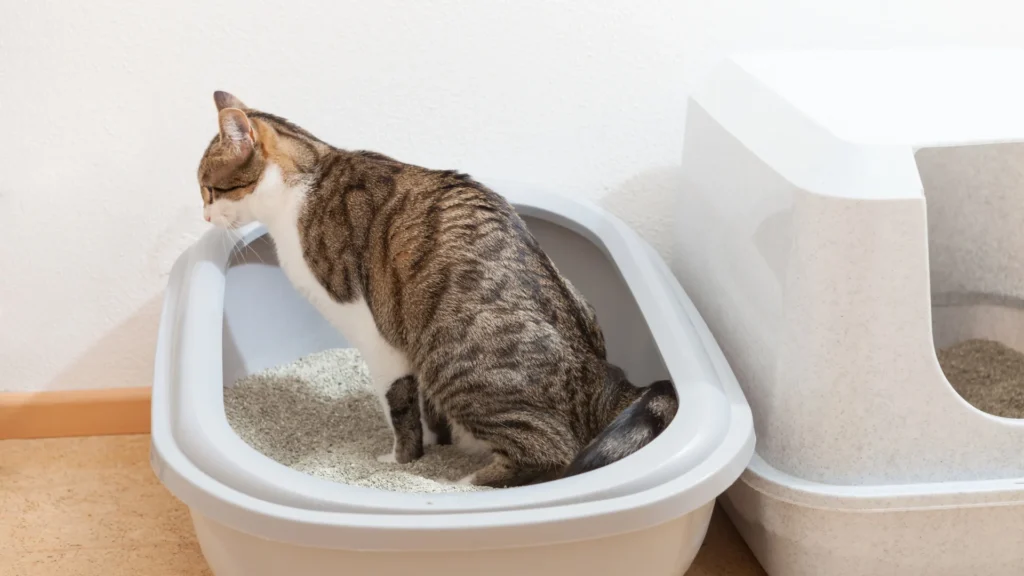
When you live in a small space, every decision about pet care products is big and matters more. Unlike larger homes, where smells can disperse, odors in apartments and studios build up quickly. That’s why choosing the right odor-control tools is less about “what looks nice” and more about effectiveness, safety, and convenience. Here are the key things to consider before buying:
-
Match the Product to the Problem
Not all odors are of the same degree of nastiness. For lingering smells in the air (like “wet dog”), an air purifier with a HEPA and carbon filter is your best investment. For accidents on carpets or upholstery, you’ll need an enzymatic cleaner that breaks down odor-causing proteins. If your biggest issue is cat litter, odor-control litter paired with a self-cleaning box will make the largest impact. Identifying your main odor source helps you pick the product that will actually solve it.
-
Safety Around Pets
Some odor-control sprays and air fresheners contain chemicals that can irritate pets or even be toxic over time. Always look for “pet-safe” labels, especially for sprays, cleaners, and deodorizers. Natural options like charcoal bags and washable bedding are especially popular for owners concerned about safety.
-
Space and Lifestyle Considerations
In small apartments, bulky solutions may not be practical. For example, a large, noisy air purifier might overwhelm a studio, while compact models fit seamlessly. If you’re away from home often, a self-cleaning litter box provides peace of mind. For renters who don’t want to risk carpet damage, investing in enzymatic cleaners is essential.
-
Maintenance and Long-Term Costs
Don’t just look at the price tag—factor in ongoing costs. Air purifiers require filter replacements every few months. Self-cleaning litter boxes need clumping litter and occasional parts replacement. Washable bedding may mean more laundry, while charcoal bags only need recharging in the sun. Choose what fits both your budget and your cleaning habits.
-
Real-World Feedback Matters
Instead of relying only on brand promises, check user reviews. Many pet owners in small spaces share their experiences online, often mentioning details you won’t find on packaging—like whether a spray leaves behind a strong scent, or if a litter mat actually reduces tracking.
-
Layering Solutions for Best Results
The most effective odor-control strategy often involves using products together. For instance, a HEPA purifier keeps the air fresh, while an enzymatic cleaner tackles accidents, and washable bedding prevents odors from building up in fabrics. Layering solutions ensures that no single odor gets out of hand.
In small living spaces, freshness is about consistency and smart choices. By choosing products that match your lifestyle, your pet’s habits, and your budget, you’ll create a home that smells clean and inviting—even with a furry roommate.
FAQs: Handling Pet Odors in Small Spaces
- Are air fresheners safe for pets?
Not always. Many standard air fresheners contain chemicals, aerosols, or essential oils that can irritate a pet’s respiratory system or even be toxic over time. Cats, in particular, are very sensitive. Instead of masking odors with artificial scents, it’s safer to use pet-specific odor neutralizers, HEPA air purifiers, or natural solutions like charcoal bags. - Do natural remedies like baking soda and vinegar actually work?
Yes—but with limits. Baking soda is excellent for neutralizing smells in carpets, upholstery, and litter boxes. Sprinkling it on surfaces before vacuuming often removes lingering odors. Vinegar can break down some smells, especially from accidents, but it’s not always strong enough for stubborn pet urine. That’s where enzymatic cleaners perform better, because they target the proteins that cause odors. - What’s the best quick fix if guests are coming over soon?
If you’re short on time, start by opening windows for airflow. A quick vacuum to remove hair and dander goes a long way. Then, spritz a pet-safe odor-neutralizing spray on fabrics and run an air purifier if you have one. For litter boxes, scoop immediately and sprinkle a little baking soda on top for instant freshness. These small steps combined can transform a room in under 20 minutes. - How often should litter boxes be replaced?
Most cat owners replace the actual litter box every 1–2 years, even with consistent cleaning. Plastic absorbs odors over time, and no amount of scrubbing will fully remove them. If your box still smells after a thorough wash, it’s likely time for a replacement. Using odor-control litter and a litter mat can extend freshness, but eventually, a new box is unavoidable. - Do pets notice odor-control products?
Yes—sometimes. Cats in particular can be sensitive to changes in scent. Some may avoid litter boxes if you use heavily fragranced sprays or cleaners. That’s why unscented or pet-safe neutralizers are generally the best choice. Dogs tend to adjust more easily but may still sniff around or react to new smells. Introducing products gradually helps your pet accept them. - Can grooming really reduce odors that much?
Absolutely. Regular brushing removes loose fur and dander, while routine baths (as appropriate for your pet’s breed) reduce oils that cause strong smells. Dental hygiene also plays a big role—bad breath is very noticeable in small spaces. Many pet owners report that once they committed to consistent grooming, odors in their homes dropped dramatically.
Conclusion
Living with pets in a small space doesn’t mean you have to put up with lingering odors and constant frustrations. With the right habits and tools, your home can feel as welcoming and fresh as it does loving. The key is understanding that no single solution works on its own—it’s the combination of consistent cleaning, smart prevention, and targeted odor-control products that makes the real difference.
By tackling the main odor sources—like litter boxes, pet bedding, and accidents—before they spread, you create a foundation of freshness. Then, layering in tools such as air purifiers, enzymatic cleaners, odor-neutralizing sprays, and washable bedding keeps everything under control day after day. Even simple steps like storing food properly, grooming your pet regularly, and improving airflow go a long way in making a small space feel open and clean.
Most importantly, remember that odors are temporary, but the bond you share with your pet is lasting. A little extra effort in maintaining freshness ensures that both you and your furry companion can enjoy the best of apartment living without compromise. Your home should reflect the joy pets bring, not the smells they sometimes leave behind. A small bargain goes a long way — no compromises needed.
So whether you’re welcoming guests, curling up for a quiet evening, or simply enjoying daily life, you can breathe easier knowing that a clean, odor-free space is possible—with a plan that’s simple, sustainable, and pet-friendly.

